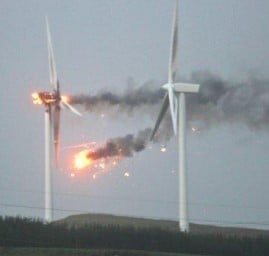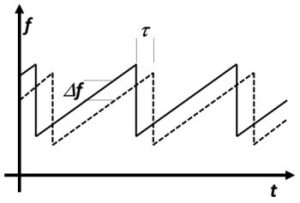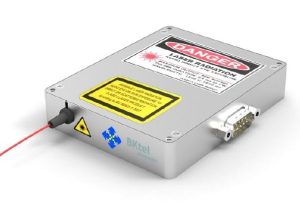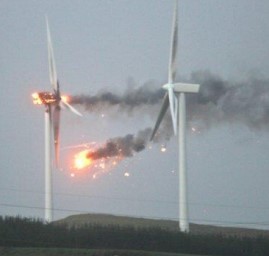
Introduction
The concept of using the wind as an energy source has been around for thousands of years. Over this time period wind has been used for applications as massive as propelling ships across the oceans to grinding grain into flour. In 1890, only eight years after Edison founded the Edison Electric Illuminating Company, Americans began to use windmills to generate electricity for their homes and businesses. Now nearly 130 years later, in the United States alone, wind energy is responsible for powering over 28 million homes, with an installed capacity of over 96 gigawatts according to the U.S. Department of Energy [1]. In their 2015 report titled “Wind Vision: A New Era for Wind Power in the United States” the U.S. Department of energy went on to project that by the year 2050 wind power could account for up to 35 percent of all U.S. energy demands [2]. With all of these factors in mind, it is no wonder that wind turbine technology has advanced so rapidly over the past 50 years with the modern three-blade horizontal wind turbine capable of achieving up to 50 percent energy conversion efficiency [3].
These modern wind turbines function on the same basic principles as an airplane wing, utilizing their curved shape to produce a pressure differential on either side of the blade as the wind passes over it. Additionally, just as an airplane wing can generate different amounts of lift depending on the angle of the wing, so to can the wind turbine blade generate different rotational speeds as the pitch of the blade is varied. This is a critical factor in ensuring that the blades maintain a rotation velocity required for structural stability, in laymen’s terms if the pitch is not controlled the windmill can spin out of control and possibly explode. Figure 1 below, reproduced from an article published in Energies titled “Wind Turbine Blade Design,” (taken initially from www.desmoinesregister.com) shows among other things that both the pitch and the yaw of the wind turbine can be actively controlled to ensure continual safe operation [3].

Figure 1: Typical configuration of a modern large-scale wind turbine, showing active pitch and yaw control [3].
Windspeed measurement with LiDAR
While in the figure above the windspeed was shown to be measured with a mechanical anemometer and wind vane located on top of the generator tower, over the past ten years these devices have been shown to be slow to report extreme weather changes. The image below in figure 2, is just one example where a storm off the Atlantic caused wind speeds to reach 160 miles per hour in Ardrossan, Scotland, resulting in the turbine exploding [4]. One approach to solving this problem that is starting to be implemented around the world installs a network of single frequency Doppler LiDAR sensors around the wind farm allowing for much higher accuracy of wind speed from all directions. While it is important to note that due to the turbidity of wind flow through a wind farm it is inevitable that wind speed will evolve between the LiDAR sensor and the wind turbine itself, researchers such as Simley and Pao at the University of Colorado, have been able to develop highly accurate models for predicting such effects [5]. In their recent review article published by National Renewable Energy Laboratory (NREL), they went on to explain that when this methodology is applied to a radially scanning LiDAR sensor mounted atop the turbine, it will produce the optimal results at a scanning distance of approximately 150m away from the turbine.
Figure 2: Wind turbine in Scotland exploding after failing to detect extreme wind.
Doppler LiDAR, which we discussed in great detail in a previous white paper titled “Single Frequency Fiber Lasers for Doppler LiDAR,” measures velocity by measuring the Doppler shift of the scattered laser light compared to that of the transmitted signal [6]. In that same article, we went on to explain how there is a tradeoff between range and frequency (velocity) resolution, which can be summarized as the longer the laser is on the target the finer the frequency resolution but, the coarser the range resolution. When this technology is used to track solid objects, like in driverless cars or military targeting systems, knowing the precise distance to the target is of the utmost importance. However, when monitoring wind speeds a distance resolution on the order of 30 meters is more than sufficient, which results in a laser pulse width of approximately 200ns which is still less than ideal for resolving the Doppler shift.

For this reason, most of the wind speed measurement LiDAR systems currently deployed use frequency modulated (FM) single-frequency laser sources, for signal generation, where the laser’s frequency is varied in a repeating pattern. As was discussed in previous articles we have written on this topic, there are many different forms of FM LiDAR signals, they are all typically processed through a crosscorrelation method, like match filter processing [6]. FM LiDAR signals are of particular interest in this case because the repetitive pattern provides a reference for not only determining the frequency changes in the return signal due to Doppler shifting but also the delay time and subsequently the distance. One of the traditional challenges with FM LiDAR signal generation, is the fact that the range resolution is inversely proportional to the modulation bandwidth which is far harder to achieve than in the radio frequency range [7], but since the range resolution requirements are so relaxed when measuring wind speed this is no longer a difficulty.
Laser Requirements
While there is a wide range of single-frequency lasers available which could theoretically be modulated for wind speed LiDAR, single-frequency fiber lasers have several advantages. These advantages primarily derive from the geometry of the fiber optic itself, namely the innate ability to have an extremely long single-mode optical cavity. This allows for the production of either extremely high-power single-mode lasers producing unprecedented brightness, or extremely narrow band lasers with near-perfectly single-frequency output. Most fiber lasers are erbium (Er) doped and lase at approximately 1550nm, which corresponds to the peak absorption band of water making them eye-safe which is critical for the deployment of any effective LiDAR system.
Figure 3 LRL2 Single Frequency Fiber Laser from BKtel.
One example of an ideal CW single-frequency fiber laser for LiDAR is the LRL2, shown in figure 3, from BKtel. The laser provides a perfect TEM00 output beam with up to 1 W of output power and a linewidth of 10khz. The LRL2 has an operating range from 0° C to 65° C, with a wavelength drift of only 0.1 pm/° C, and extremely low relative intensity (RIN) noise as shown in figure 4 below. Not only are the optical characteristic of this laser ideal for LiDAR signal generation; it’s compact (120 mm x 100 mm x 20 mm), energy efficient (<30W power consumption) and rouged design make it ideal for integration in LiDAR systems in the harshest of environments
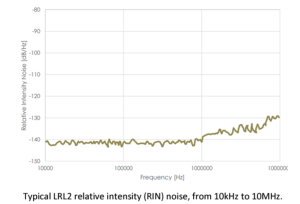
Figure 4. Typical LRL2 relative intensity (RIN) noise, from 10kHz to 10MHz.
About RPMC Lasers
RPMC Lasers Inc (Founded in 1996) is the leading laser distributor in North America. We are an OEM supplier working with the technology leading laser manufacturers from the US and Europe. RPMC supports the Industrial, Medical, Military, and Scientific markets. RPMC offers diode lasers, laser modules, solid-state lasers and amplifiers, ultra-short pulse lasers, microchip lasers, and fiber lasers and amplifiers. Also, we provide a wide range of custom solid-state lasers and laser diode subsystems.
References
[1] History of U.S. Wind Energy, U. S. Department of Energy, https://www.energy.gov/eere/wind/history-uswind-energy, 2018.
[2] R. Wiser et al., Wind vision: A new era for wind power in the United States, Electr. J. 28(9) (2015), 120–132.
[3] P. J. Schubel and R. J. Crossley, Wind Turbine Blade Design, Energies 2012, 5, 3425-3449.
[4] Scottish Wind Turbine Explodes, SciTechDaily, https://scitechdaily.com/scottish-wind-turbineexplodes/, 2011.
[5] Simley E, Pao LY. LIDAR Wind speed measurements of evolving wind fields, Report No. NREL/SR-5000-
55516, National Renewable Energy Laboratory, Boulder, Colorado, 2012.
[6] R. Chimenti, Single Frequency Fiber Lasers for Doppler Lidar, RPMC Lasers Digital Whitepaper,
https://blog.rpmclasers.com/white-papers/single-frequency-fiber-lasers-for-doppler-lidar, 2019.
[7] R. V. Chimenti, M. P. Dierking, P. E. Powers, J. W. Haus, and E. S. Bailey, “Experimental verification of
sparse frequency linearly frequency modulated ladar signals modeling,” Opt. Express 18, 15400-15407 (2010)

 BUY NOW
BUY NOW 